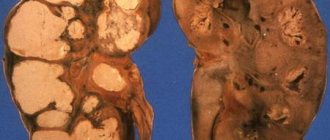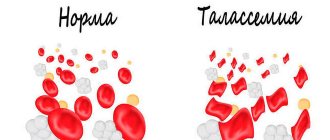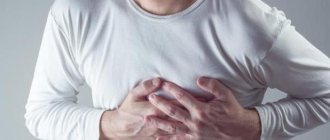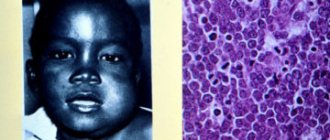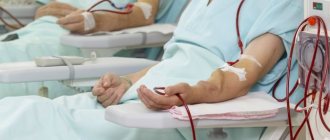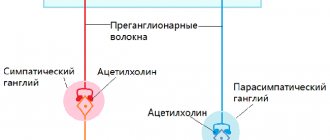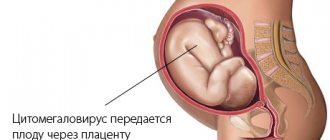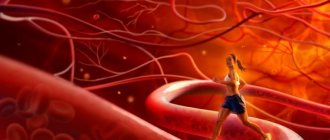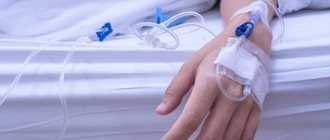Physical therapy is an affordable and effective way to restore and improve health. There are suitable exercise therapy methods for every patient.
Exercise therapy (therapeutic physical education) is a method of treatment, prevention and rehabilitation of diseases, which consists of using specially selected physical exercises and establishing proper breathing.
Exercise therapy is based on the use of one of the main biological functions of the body - movement, as the main stimulator of growth, development and formation of the body.
“Movement is life,” says Voltaire’s famous saying. But many people are limited in their ability to exercise at a sporting level due to health reasons. Exercise therapy methods allow us to solve this problem, taking into account the individual characteristics of a person.
What is exercise therapy used for?
Physiotherapy exercises are a necessary component of all sections of modern practical medicine. Exercise therapy is widely used in the following areas:
- traumatology (for open and closed fractures, soft tissue injuries to accelerate healing);
- orthopedics (joint diseases, flat feet);
- neurology (osteochondrosis, disc herniation, glenohumeral periarthrosis, depressive states);
- cardiology (coronary heart disease, hypertension, etc.) to improve nutrition of the heart muscle and enhance its contractile function;
- pulmonology (pneumonia, bronchitis, bronchial asthma, tuberculosis);
- in preparation for operations on the abdominal and thoracic cavities, and rehabilitation after them (as a means of preventing postoperative complications);
- in the complex treatment of various pathologies in children (diseases of the cardiovascular system, respiratory system, rheumatism).
- for diseases of the digestive system (gastritis, colitis, constipation, peptic ulcer, liver and biliary tract disease),
- metabolic disorders and endocrine diseases (obesity, diabetes, gout),
- in obstetrics and gynecology (chronic inflammatory processes, abnormal positions of the uterus, prolapse of the vaginal walls, menstrual irregularities, menopause).
Exercise therapy exercises affect the central nervous system, changing the mobility of nervous processes in the cerebral cortex; correct the functions of the main body systems (breathing, blood circulation, etc.); improve exchange processes; influence the emotional state of a person, distracting from the thought of illness and giving a feeling of cheerfulness.
Physiotherapy exercises are prescribed exclusively by a doctor and are carried out strictly according to his instructions, most often in healthcare institutions. When choosing means and methods of exercise therapy, the characteristics of the disease and the patient’s condition at the moment are taken into account.
Questions from readers on
Berezovskaya Elena Petrovna
gynecology
Please tell me I have been taking Yarina for 8 months in order to improve acne. The result is simply excellent, but there are problems with excess weight and cellulite, could this be related to Yarina, and what to do?
18 Oct 2013
Please tell me I have been taking Yarina for 8 months in order to improve acne. The result is simply excellent, but there are problems with excess weight and cellulite, could this be connected with Yarina, and what to do.
View answer ?Ask a question
General basics of physical therapy
Exercise therapy exercises have a therapeutic effect only with proper, regular, long-term use of physical exercises. For these purposes, a methodology for conducting classes, indications and contraindications for their use, taking into account effectiveness, and hygienic requirements for training places have been developed.
There are general and specific methods of exercise therapy. The general methodology of exercise therapy provides rules for conducting classes (procedures), classification of physical exercises, dosage of physical activity, a scheme for conducting classes at different periods of the course of treatment, rules for constructing a separate lesson (procedure), forms of application of exercise therapy, and diagrams of movement modes. Private exercise therapy techniques are intended for a specific nosological form of the disease, injury and are individualized taking into account the etiology, pathogenesis, clinical characteristics, age, and physical fitness of the patient. Special exercises to influence the affected systems and organs must necessarily be combined with general strengthening exercises, which provides general and special training.
Physical exercises are performed after they are explained or demonstrated. In elderly patients with organic lesions of the central nervous system, demonstration and verbal explanation of the exercises should be combined. During classes there should be a calm environment, the patient should not be distracted by extraneous conversations or other irritants.
Physical exercise should not increase pain, since pain reflexively causes vasospasm and stiffness of movement. Exercises that cause pain should be carried out after preliminary relaxation of the muscles, at the moment of exhalation, in optimal starting positions. From the first days of classes, the patient should be taught proper breathing and the ability to relax muscles. Relaxation is more easily achieved after vigorous muscle tension. With unilateral lesions of the limbs, relaxation training begins with a healthy limb. Musical accompaniment of classes increases their effectiveness.
The main means of exercise therapy are physical exercises and natural factors. There are many physical exercises, and they affect the body in different ways.
Classification of physical exercises
Physical exercises in exercise therapy are divided into three groups: gymnastics, applied sports and games.
Gymnastic exercises
Consist of combined movements. With their help, you can influence various systems of the body and individual muscle groups, joints, developing and restoring muscle strength, speed, coordination, etc. All exercises are divided into general developmental (general strengthening), special and breathing (static and dynamic).
General strengthening exercises
Used to heal and strengthen the body, increase physical performance and psycho-emotional tone, activate blood circulation and breathing. These exercises facilitate the therapeutic effect of special ones.
Special exercises
Selectively act on the musculoskeletal system. For example, on the spine - with its curvature, on the foot - with flat feet and injury. For a healthy person, exercises for the torso are general strengthening; for osteochondrosis and scoliosis, they are classified as special, since their action is aimed at solving treatment problems - increasing the mobility of the spine, correcting the spine, strengthening the muscles surrounding it. Exercises for the legs are general strengthening for healthy people, and after surgery on the lower extremities, injury, paresis, joint diseases, these same exercises are classified as special. The same exercises, depending on the method of their application, can solve different problems. For example, extension and flexion in the knee or other joint in some cases is aimed at developing mobility, in others - to strengthen the muscles surrounding the joint (exercises with weights, resistance), in order to develop muscle-joint sense (accurate reproduction of movement without visual control) . Typically, special exercises are used in combination with general developmental exercises.
Gymnastic exercises are divided into groups:
- according to anatomical characteristics;
- by the nature of the exercise;
- by species;
- based on activity;
- based on the objects and projectiles used.
Based on anatomical characteristics, the following exercises are distinguished:
- for small muscle groups (hands, feet, face);
- for medium muscle groups (neck, forearms, shoulder, lower leg, thigh);
- for large muscle groups (upper and lower limbs, torso),
- combined.
Based on the nature of muscle contraction, exercises are divided into two groups:
- dynamic (isotonic);
- static (isometric).
A muscle contraction in which it develops tension but does not change its length is called isometric (static). For example, when actively lifting a leg up from the starting position lying on the back, the patient performs dynamic work (lifting); when holding the leg raised up for some time, the muscles work in an isometric mode (static work). Isometric exercises are effective for injuries during immobilization.
Dynamic exercises are most often used. In this case, periods of contraction alternate with periods of relaxation.
Other groups of exercises are also distinguished by their nature. For example, stretching exercises are used to treat joint stiffness.
Based on type, exercises are divided into exercises:
- in throwing,
- for coordination,
- for balance,
- in resistance
- hangs and supports,
- climbing,
- corrective,
- respiratory,
- preparatory,
- ordinal.
Balance exercises are used to improve coordination of movements, improve posture, as well as to restore this function in diseases of the central nervous system and vestibular apparatus. Corrective exercises are aimed at restoring the correct position of the spine, chest and lower extremities. Coordination exercises restore overall coordination of movements or individual body segments. They are used from different IPs with different combinations of movements of the arms and legs in different planes. Necessary for diseases and injuries of the central nervous system and after prolonged bed rest.
Based on activity, dynamic exercises are divided into the following:
- active,
- passive,
- for relaxation.
To facilitate the work of the flexor and extensor muscles of the arms and legs, exercises are carried out in the IP lying on the side opposite to the limb being exercised. To facilitate the work of the foot muscles, exercises are performed in the IP on the side on the side of the limb being exercised. To facilitate the work of the adductor and abductor muscles of the arms and legs, exercises are performed in the IP on the back and abdomen.
To complicate the work of the flexor and extensor muscles of the arms and legs, exercises are performed in the IP lying on the back or stomach. To complicate the work of the adductor and abductor muscles of the arms and legs, exercises are performed in the IP lying on the side opposite to the limb being exercised.
To perform exercises with effort, resistance is applied by the instructor or a healthy limb.
Mentally imaginary (phantom), ideomotor exercises or exercises “sending impulses to contraction” are performed mentally and are used for injuries during immobilization, peripheral paralysis, and paresis.
Reflex exercises involve influencing muscles distant from those being trained. For example, to strengthen the muscles of the pelvic girdle and hips, exercises that strengthen the muscles of the shoulder girdle are used.
Passive exercises are those performed with the help of an instructor, without the patient’s volitional effort, in the absence of active muscle contraction. Passive exercises are used when the patient cannot perform active movement, to prevent stiffness in the joints, to recreate the correct motor act (for paresis or paralysis of the limbs).
Relaxation exercises reduce muscle tone and create conditions for relaxation. Patients are taught “volitional” muscle relaxation using swinging movements and shaking. Relaxation is alternated with dynamic and statistical exercises.
Depending on the gymnastic apparatus and equipment used, exercises are divided into the following:
- exercises without objects and equipment;
- exercises with objects and equipment (gymnastic sticks, dumbbells, clubs, medicine balls, jump ropes, expanders, etc.);
- exercises on apparatus, simulators, mechanical devices.
Breathing exercises
All exercises involve breathing. Breathing exercises are divided into the following:
- dynamic,
- static.
Dynamic breathing exercises are combined with movements of the arms, shoulder girdle, and torso; static (conditionally) are carried out with the participation of the diaphragm, intercostal muscles and abdominal muscles and are not combined with movements of the limbs and torso.
When using breathing exercises, you should intensify your exhalation. With the static full type of breathing, all respiratory muscles (diaphragm, abdominal press, intercostal muscles) are involved in the process of inhalation and exhalation. Full breathing is the most physiological; During inhalation, the chest expands in the vertical direction due to the lowering of the diaphragm and in the anteroposterior and lateral directions as a result of the movement of the ribs up, forward and to the sides.
Static breathing exercises include:
- exercises that change the type of breathing: the full type of breathing described above;
- chest type of breathing;
- diaphragmatic breathing;
- diaphragmatic breathing with resistance - the instructor’s hands are located in the area of the edge of the costal arch (closer to the middle of the chest);
There are general and special breathing exercises. General breathing exercises improve ventilation and strengthen the core respiratory muscles. Special breathing exercises are used for lung diseases, paresis and paralysis of the respiratory muscles.
Drainage breathing exercises are exercises that promote the outflow of secretions from the bronchi into the trachea, followed by the release of sputum during coughing.
For better outflow of discharge from the affected area, static and dynamic breathing exercises are used. Drainage exercises are carried out in the starting positions lying on the stomach, on the back, on the side with the foot end of the bed raised, sitting, standing. The choice of starting position depends on the location of the lesion.
Sports and applied exercises
Applied sports exercises include walking, running, crawling and climbing, throwing and catching a ball, rowing, skiing, skating, cycling, health path (metered climbing), hiking. Walking is the most widely used - for a wide variety of diseases and almost all types and forms of exercise. The amount of physical activity when walking depends on the length of the path, the size of the steps, the pace of walking, the terrain and difficulty. Walking is used before starting classes as a preparatory and organizing exercise. Walking can be complicated - on toes, on heels, walking in a cross step, in a half-squat, with high knees. Special walking - on crutches, with a stick, on prostheses. It is used for damage to the lower extremities. Walking speed is divided into: slow - 60-80 steps per minute, medium - 80-100 steps per minute, fast - 100-120 steps per minute and very fast - 120-140 steps per minute.
Games
Games are divided into four groups of increasing load:
- on the spot;
- sedentary;
- movable;
- sports.
In exercise therapy they use croquet, bowling alley, small towns, relay races, table tennis, badminton, volleyball, tennis and elements of other sports games (basketball, football, handball, water polo). Sports games are widely used in sanatorium-resort treatment and are carried out according to general simplified rules with the selection of partners with the same physical fitness.
It is advisable to use gymnastic exercises with specially selected musical accompaniment when conducting group morning and therapeutic exercises. This has a beneficial effect on the state of the nervous, cardiovascular and respiratory systems, and on metabolism.
Elements of dance and dance steps should also be included in the procedures.
Physical exercises in water and swimming in a pool at a water temperature of 25-27 °C are effective in the treatment of diseases of the vascular system, respiratory system, metabolism, nervous system, and damage to the musculoskeletal system during the period of stable remission of a chronic disease. Exercises at a water temperature of 34-36 °C are advisable for patients with spastic paresis.
In exercise therapy, mechanical devices and simulators of local (local) and general action are used. To develop joints while limiting movements in them and strengthen weakened muscles in patients with diseases and consequences of injuries of the musculoskeletal system, exercises using local mechanical devices are prescribed - as an addition to therapeutic gymnastics procedures.
General-purpose exercise machines and mechanical devices - exercise bikes, rowing machines, treadmills and others - are prescribed for diseases of the cardiovascular and respiratory systems, exogenous constitutional obesity and other diseases in the compensation stage.
Dosage of physical activity
The dosage in exercise therapy is the total amount of physical activity that the patient receives during the procedure.
The load should be optimal and correspond to the patient's functional capabilities. To dose the load, you should take into account a number of factors that influence the amount of load, increasing or decreasing it:
- Initial positions lying down, sitting - lighten the load, standing - increase it.
- Size and number of muscle groups. Inclusion of small groups (feet, hands) - reduces the load; exercises for large muscles - increase.
- Range of motion: the larger, the greater the load.
- The number of repetitions of the same exercise: increasing it increases the load.
- Pace of execution: slow, medium, fast.
- Doing exercises rhythmically makes the load easier.
- The requirement for precision in performing exercises: at first increases the load, then, when automaticity is developed, decreases it.
- Complex exercises for coordination increase the load, so they are not included in the first days.
- Relaxation exercises and static breathing exercises reduce the load: the more breathing exercises, the less the load. Their ratio to general strengthening and special ones can be 1:1; 1:2; 1:3; 1:4; 1:5.
- Positive emotions during classes in a playful way help to bear the load easier.
- Varying degrees of effort by the patient when performing exercises: changes the load.
- The principle of dissipating the load with alternating different muscle groups: allows you to select the optimal load.
- The use of objects and projectiles affects not only an increase, but also a decrease in load.
The total physical activity in a lesson depends on its intensity, duration, density and volume. The intensity corresponds to a certain threshold level: from 30-40% at the beginning and 80-90% at the end of treatment. To determine the intensity threshold, perform loads on a bicycle ergometer with increasing power from 50 to 500 kgm/m or more to the tolerance limit. The duration of the load corresponds to the training time. The concept of load density refers to the time spent actually performing exercises and is expressed as a percentage of the total exercise time. The load volume is the total work done in the lesson. Performing exercises evenly without interruptions during a lesson is referred to as the continuous method; the total physical load is determined by the intensity and duration of the exercises. With the interval (separate) method with pauses between exercises, the load depends on the density of exercise.
The movement mode (activity mode) is a system of those physical activities that the patient performs during the day and throughout the course of treatment.
Strict bed rest is prescribed for seriously ill patients. To prevent complications, static breathing exercises, passive exercises and light massage are used.
Extended bed rest is prescribed for general satisfactory condition. Allow transitions to a sitting position in bed from 5 to 40 minutes several times a day. Therapeutic exercises are used with a small dosage of physical activity with a permissible increase in heart rate of 12 beats per minute.
The ward regime includes a sitting position of up to 50% during the day, movement around the department at a walking pace of 60 steps per minute for a distance of up to 100-150 m, therapeutic exercises lasting up to 20-25 minutes, with an increase in heart rate after exercise by 18-24 beats ./min.
In the free mode, in addition to the ward mode, they include moving up the stairs from the 1st to the 3rd floor, walking around the territory at a pace of 60-80 steps per minute for a distance of up to 1 km, with rest every 150-200 m. Therapeutic exercises are prescribed Once a day in the gym, the duration of the lesson is 25-30 minutes, with an increase in heart rate by 30-32 beats per minute after it.
The pulse rate during classes should be no more than 108 beats/min for adults and 120 beats/min for children.
In sanatorium-resort conditions, gentle, gentle-training and training regimes are used.
The gentle regime corresponds basically to the free regime in the hospital, with permission to walk up to 3 km with rest every 20-30 minutes, games, swimming (if prepared and hardened).
The gentle training regime allows for average physical activity: walking up to 4 km in 1 hour, trekking, skiing at an air temperature of at least 10-12 ° C, boating in combination with rowing 20-30 m, sports games with facilitated conditions for their implementation.
The training regime is used in cases where there are no pronounced deviations in the functions of various organs and systems. Running and sports games are allowed according to the general rules.
Forms and methods of physical therapy
A system of certain physical exercises is a form of exercise therapy; These are therapeutic exercises, morning hygienic exercises, independent exercises for patients on the recommendation of a doctor or instructor; dosed walking, health path, physical exercises in water and swimming, skiing, rowing, training on exercise machines, mechanical equipment, games (volleyball, badminton, tennis), small towns. In addition to physical exercise, exercise therapy includes massage, air and water hardening, occupational therapy, and physical therapy (horseback riding).
Hygienic gymnastics is intended for the sick and healthy. Carrying it out in the morning after a night's sleep is called morning hygienic gymnastics; it helps relieve inhibition processes and promote vigor.
Therapeutic gymnastics is the most common form of using physical exercises for the purposes of treatment and rehabilitation. The ability, through a variety of exercises, to purposefully influence the restoration of damaged organs and systems determines the role of this form in the exercise therapy system. Classes (procedures) are carried out individually for seriously ill patients, in small group (3-5 people) and group (8-15 people) methods. Patients are grouped into groups according to nosology, i.e. with the same disease; according to the location of the injury. It is wrong to group patients with different diseases into one group.
Each lesson is built according to a specific plan and consists of three sections: preparatory (introductory), main and final. The introductory section provides preparation for performing special exercises and gradually includes them in the load. The duration of the section takes 10-20% of the time of the entire lesson.
In the main section, classes solve problems of treatment and rehabilitation and use special exercises in alternation with general strengthening exercises. Section duration: 60-80% of the total class time.
In the final section, the load is gradually reduced.
Physical activity is monitored and regulated by observing the body's responses. Pulse monitoring is simple and accessible. A graphical representation of the change in its frequency during an exercise is called a physiological load curve. The greatest increase in heart rate and maximum load is usually achieved in the middle of the session - this is a single-peak curve. For a number of diseases, it is necessary to reduce the load after an increased load and then increase it again; in these cases the curve may have several vertices. You should also count your pulse 3-5 minutes after exercise.
The density of classes is very important, i.e. time of actual exercises, expressed as a percentage of the total time of the lesson. In inpatients, the density gradually increases from 20-25 to 50%. During sanatorium-resort treatment on a training regimen in groups of general physical training, the density of classes of 80-90% is acceptable. Individual independent exercises complement the therapeutic exercises conducted by the instructor, and can subsequently be carried out only independently with periodic visits to the instructor to receive instructions.
The gymnastic method, carried out in therapeutic gymnastics, has become most widespread. The game method complements it when working with children.
The sports method is used to a limited extent and mainly in sanatorium and resort practice.
When using exercise therapy, you should follow the principles of training, taking into account the therapeutic and educational objectives of the method.
- Individualization in methodology and dosage, taking into account the characteristics of the disease and the general condition of the patient.
- Systematic and consistent use of physical exercises. They start with simple ones and move on to complex exercises, including 2 simple and 1 complex new exercise in each lesson.
- Regularity of exposure.
- The duration of classes ensures the effectiveness of treatment.
- Gradual increase in physical activity during treatment to ensure a training effect.
- Diversity and novelty in the selection of exercises are achieved by updating them by 10-15% with repeating 85-90% of the previous ones to consolidate the results of treatment.
- Moderate, prolonged or fractional loads are more appropriate to use than increased loads.
- Maintain a cyclic pattern of alternating exercises with rest.
- The principle of comprehensiveness - provides for an impact not only on the affected organ or system, but also on the entire body.
- The visibility and accessibility of the exercises is especially necessary in exercises with lesions of the central nervous system, with children, and the elderly.
- Conscious and active participation of the patient is achieved by skillful explanation and selection of exercises.
The course of exercise therapy is divided into periods: introductory, main and final (or the beginning, middle and end of the course of treatment). Accordingly, for each period, schemes and sets of exercises are drawn up.
An approximate set of physical exercises for stage I circulatory failure
- IP - sitting on a chair, hands on hips. Calm breathing of a static nature (3-4 times).
- IP - sitting, hands on knees. Extension of the arms at the wrist joint (6-8 times).
- IP - sitting. Dorsal flexion of the feet at the ankle joint (6-8 times).
- IP - sitting, arms down. Hands to the sides - inhale, lower - exhale (4-5 times).
- IP - the same. Throwing straight arms forward, to the sides, lower (5-6 times). .
- IP - sitting. Alternating hip lifts. Retract your stomach while adducting your hips (5-6 times).
- IP - stsdya. Move your arms to the sides - inhale, lower them - exhale (4-5 times).
- IP - sitting, hands fixed on the back of the chair. Arching your back without lifting your arms. When bending, inhale; when bending, exhale.
- IP - sitting, hold the seat with your hands, legs extended. Breeding and bringing together straight legs with feet sliding along the floor (6-8 times).
- IP - sitting, hands on chin. Spread your elbows to the side - inhale, bring your shoulders, squeeze your chest and slightly tilt your body - exhale (4-5 times).
- IP - sitting, hands on hips, legs shoulder-width apart. Tilt the body alternately to the right and left while exhaling. When straightening, inhale (3-4 times).
- IP - sitting, arms down, raising arms to the sides up - inhale, lowering - exhale (3-4 times).
- IP - sitting on a chair, hands on hips. Exercise in raising, lowering, abducting and bringing forward the shoulder girdle (6 - 8 times).
- IP - sitting on the edge of a chair, holding onto the seat with your hands. Imitation of the movements of a cyclist with feet sliding along the floor (10-12 times).
- IP - sitting. Calm breathing of a static nature (3-4 times).
- IP - sitting. Raising your arms to the sides, up - inhale, lower - exhale (3-5 times).
- IP - sitting. Circular movements in the wrist joints (5-6 times in both directions).
- IP - sitting. Rolling the feet from the toes to the heel (5-6 times).
Indications, contraindications and risk factors in physical therapy
Therapeutic exercise is indicated at any age for almost all diseases, injuries and their consequences. It is widely used:
- in the clinic of internal diseases;
- in neurology and neurosurgery;
- in traumatology and orthopedics;
- after surgical treatment of diseases of internal organs;
- in pediatrics;
- in obstetrics and gynecology;
- in phthisiology;
- in psychiatry;
- in ophthalmology - for uncomplicated myopia;
- in oncology - in patients without metastases after radical treatment.
The list of contraindications is very small and concerns mainly the initial period of the acute stage of the disease or exacerbation of chronic diseases, the acute period of injury, with indications for surgical intervention, and bleeding.
General contraindications for prescribing exercise therapy:
- acute infectious and inflammatory diseases with high body temperature and general intoxication;
- acute period of the disease and its progressive course;
- malignant neoplasms before their radical treatment, malignant neoplasms with metastases;
- severe mental retardation (dementia) and mental illness with severely impaired intelligence;
- the presence of a foreign body near large vessels and nerve trunks;
- acute disorders of coronary and cerebral circulation;
- acute thrombosis and embolism;
- increase in cardiovascular failure with decompensation of blood circulation and breathing;
- bleeding;
- general serious condition of the patient;
- significantly pronounced pain syndrome;
- negative ECG dynamics, indicating deterioration of coronary circulation;
- atrioventricular block.
Temporary contraindications to the appointment of exercise therapy:
- exacerbation of chronic diseases;
- complication during the course of the disease;
- intercurrent diseases of an infectious or inflammatory nature;
- acute injuries;
- the appearance of signs indicating progression of the disease and deterioration of the patient’s condition;
- vascular crisis (hypertensive, hypotonic or with normal blood pressure);
- heart rhythm disturbance: sinus tachycardia (over 100 beats/min), bradycardia (less than 50 beats/min), attack of paroxysmal or atrial fibrillation, extrasystoles with a frequency of more than 1:10.
Risk factors that may cause damage to the osteoarticular apparatus include:
- severe osteoporosis in older people, especially women;
- significant effort on the part of the patient with fragile callus after fractures of the bones of the extremities, in patients with spastic paralysis and impaired pain sensitivity.
Caution should be observed after fractures to prevent the occurrence of pseudarthrosis and arthrosis. If you have a thoracic or abdominal aortic aneurysm, you should not use exercises with force or resistance. Therapeutic exercise can be an independent method of treatment, rehabilitation and disease prevention, and exercise therapy combines well with all types of drug treatment, physiobalneotherapy, mud therapy, before and after surgery.
Means and methods of exercise therapy
Therapeutic exercise is not only physical exercise. Its remedy is any physical activity: swimming, walking, bath procedures, games for medicinal purposes. Exercise therapy is used in combination with a complex of recreational and therapeutic measures (therapeutic massage, physiotherapy, medication, diet).
Complexes of physical exercises are divided into gymnastics, applied sports (for example, swimming, rowing, skiing), outdoor and sports games. The most commonly prescribed gymnastic exercises are in the form of therapeutic exercises. Exercises vary according to:
- anatomical principle: for the muscles of the arms, legs, respiratory organs, etc.;
- activity: active exercises are performed entirely by the patient himself. They can be free, lightened, with effort, for relaxation. Passive exercises are performed with outside help.
Acquired skills
While studying at the university, the resident will master all the skills and abilities necessary for professional activities. These include the ability to:
- assess the quality of medical care provided to athletes and athletes;
- collect and evaluate at the medical and static level information about the level of health of different age and gender groups of the population;
- apply physical therapy techniques to patients who require physical therapy;
- use natural non-drug factors for medical rehabilitation of patients;
- identify signs and symptoms of diseases in athletes, diagnose syndromes and pathological conditions;
- carry out a set of measures aimed at maintaining and strengthening the level of health of patients, creating a healthy lifestyle and preventing various diseases, etc.


